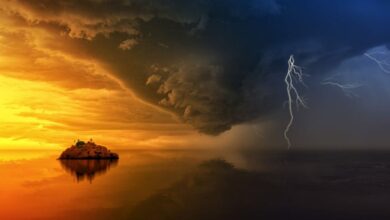What Are the Cultural Significance of the Aurora Borealis
The Aurora Borealis, commonly referred to as the Northern Lights, is a breathtaking natural phenomenon that has captivated human imagination for centuries. This ethereal display of colorful lights dancing across the night sky is not only a visual spectacle but also rich in cultural significance across various societies. From ancient myths to modern-day practices, the Aurora has inspired stories, art, and spirituality, leaving an indelible mark on the cultures that experience it.
Mythological Interpretations
In many cultures, the Aurora Borealis has been woven into the fabric of mythology. For the Indigenous peoples of North America, the lights were often seen as the spirits of ancestors or celestial beings. The Inuit, for instance, believed that the lights were the spirits of animals, and they were seen as a bridge between the living and the spiritual world. The Sámi people of Scandinavia viewed the auroras as the souls of the departed who were playing in the skies. These interpretations not only provide insight into the way communities understood their environment but also reflect their relationship with nature and the cosmos.
Artistic Inspiration
The Aurora Borealis has inspired countless artists, writers, and musicians. Its vibrant colors and dynamic movements have made their way into paintings, literature, and music. Famous artists like Caspar David Friedrich captured the essence of the Northern Lights in their works, using them as symbols of beauty and transcendence. In modern literature, authors such as Jeanette Winterson and Philip Pullman have employed the auroras as metaphors for change and enlightenment. Similarly, musicians have composed pieces that evoke the ethereal quality of the lights, highlighting their emotional and spiritual resonance. The Aurora serves as a muse, inspiring creativity and expression across various artistic mediums.
Cultural Practices and Beliefs
In many northern cultures, the Aurora Borealis is tied to various rituals and practices. For example, the Sámi people have traditional festivals that celebrate the lights, using them as a backdrop for storytelling and communal gatherings. In these ceremonies, the lights are honored as powerful forces that can influence life and fate. Additionally, some cultures believe that witnessing the auroras brings good fortune or serves as a sign of blessings from the heavens. Such beliefs foster a deep respect for the phenomenon and encourage communities to engage with their environment in meaningful ways.
Scientific Understanding and Cultural Connection
While modern science has demystified many aspects of the Aurora Borealis, its cultural significance remains potent. The scientific explanation of the lights—caused by solar winds interacting with the Earth’s magnetic field—does not diminish their impact on human culture. Instead, it adds another layer to the narrative. The coexistence of scientific understanding and cultural interpretation reflects the multifaceted ways in which humans relate to natural phenomena. In many cases, the integration of science and culture can deepen appreciation for the beauty of the auroras, inviting people to explore both the physical and mystical attributes of this spectacle.
Tourism and Economic Impact
In recent years, the Aurora Borealis has become a significant draw for tourism, especially in regions where the display is prevalent, such as Alaska, Canada, and Scandinavia. Tour operators offer unique experiences that allow visitors to witness the lights, and local economies have adapted to this influx of interest. The cultural significance of the auroras is highlighted through local storytelling, guided tours, and festivals that celebrate this natural wonder. This fusion of culture and tourism creates a platform for communities to share their heritage while promoting economic growth.
Embracing the Legacy of the Northern Lights
The Aurora Borealis continues to hold a special place in the hearts of many, transcending generations and geographical boundaries. As societies evolve, the meanings attributed to the lights may shift, but their ability to inspire wonder remains timeless. Whether viewed as a celestial dance, a manifestation of spiritual beliefs, or a source of artistic expression, the Northern Lights encapsulate the beauty of human connection to the natural world. As we look to the skies, we are reminded of our shared heritage and the stories that bind us, illuminated by the enchanting glow of the Aurora Borealis.







